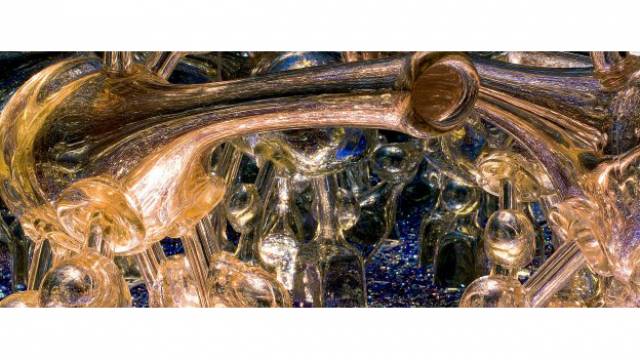Through the use of futuristic-looking mirrored animal sculptures, Erdos explores the relationships between nature, technology, and people with his artwork entitled ‘Ghost Walk under Infinite Darkness’ which is The Corning Museum of Glass’ 2013 Rakow Commission.
The Corning Museum of Glass has unveiled its 2013 Rakow Commission: ‘Ghost Walk under Infinite Darkness’ by Andrew Erdos. The artwork of Erdos is pop, sarcastic, and humorous, with a hint of social commentary. His over-the-top installations create a situation of sensory overload, which he sees as a reflection of everyday life in urban culture, especially the culture of New York City. Through the use of futuristic-looking mirrored animal sculptures, vehicles used by the artist to navigate identity and environment, Erdos explores the relationships between nature, technology, and people.
For the Rakow Commission, Erdos pushed the scale of his two-way mirrored boxes with mirrored and dichroic glass sculptures and coloured murrine to create an overwhelming sensory experience, a setting of hyper-beauty. “When all your senses are activated is oftentimes when there is a moment of clarity,” says Erdos. The titles of Erdos’ works often reference ghosts and time, which he considers to be core fascinations of humans as physically intangible but always present entities and emanations.
“I try to engage artists whose works are of superior intellectual and/or technical quality, and which transcend the traditional boundaries of glassworking for the Rakow Commission. Erdos uses traditional glassblowing techniques, and well-known glass effects such as the infinity mirror, to create non-traditional environments and narratives,” says Tina Oldknow, curator of modern glass at the Museum.
Inaugurated in 1986, the Rakow Commission is awarded annually to artists whose work is not yet represented in the Museum’s collection. The commission supports new works of art in glass by encouraging emerging or established artists to venture into new areas that they might otherwise be unable to explore because of financial limitations. It is made possible through the generosity of the late Dr. and Mrs. Leonard S. Rakow, Fellows, friends, and benefactors of the Museum. Each commissioned work is added to the Museum’s permanent collection and is displayed publicly in the Museum’s Modern Glass Gallery.




